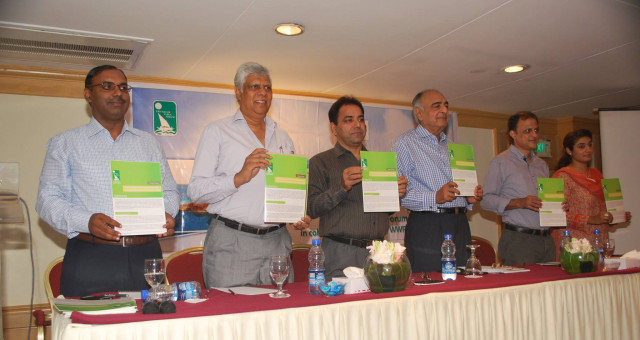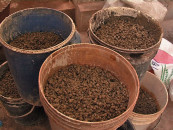Untapped resources: Experts stress need to explore coastal resources
Tourism can bring in revenue that will be beneficial to the fishing community as well as the country.

Panelists hold up the Friends of Indus Forum report at its launch on Thursday. PHOTO: COURTESY FRIENDS OF INDUS FORUM FACEBOOK PAGE
Speakers at the launching ceremony of the position paper, ‘Linking Coastal Financial Investment with Resource Development and Conservation’, at Marriott hotel on Thursday stressed that it was time to explore coastal resources for development and conservation. The paper has been developed by the Friends of Indus (FIF), in collaboration with the Building Capacity on Climate Change Adaptation in Coastal Areas of Pakistan Project of WWF-Pakistan

“Traditionally, the focus has been on fishing only but the coast is rich and other options still need to be explored,” said environmentalist and urban planner Farhan Anwar. “Our fishing sector is in severe crisis. We have to look at alternate options.” Anwar said that it was time to engage the private sector. “We have made several plans but not a single one has been implemented yet.”
Anwar explained that tourism-related development has huge potential. “We need to develop tourist sites,” he said, reasoning that the financial benefits will not only support the country but will also prove to be beneficial to fishermen.
According to the paper, Pakistan has a fish and seafood industry worth $1.2 billion. Exports alone bring in nearly $213 million annually. More than 0.8 million people rely, directly or indirectly, on the industry for their livelihoods. Anwar said that the total number of industrial units was estimated at around 6,000. No industrial activity of any significance occurs anywhere else along the coast other than in Karachi, he said.
Shamsul Haq Memon, the former technical adviser to the Sindh Coastal Development Authority, said that active management of coastal resources could sustain environmental services and livelihoods and reduce risks from coastal hazards. “Our coastal areas are rich in biodiversity,” he said. “Mangroves and Ramsar sites and wetlands are important coastal resources and provide livelihoods to local communities.”
Memon said that the coastal belt was home to a variety of marine mammals and water birds, including the green-winged Teal, blue-winged Teal, Ferruginous duck, Shell-duck, Gadwall, Shoveler and Pintail. “In the past, red-rice cultivation was in abundance in the Indus delta. Due to the uneven supply of freshwater, however, agriculture has been on the decline in recent years.”
FIF president Sikander Brohi said that all stakeholders must work together to restore and preserve the unique Indus eco-region. “The position paper is a timely initiative and identifies new forms of socio-economic benefits that can be availed by investing in coastal land and resources.”
National Institute of Oceanography’s former director-general stressed the need to make prudent investments in the coastal areas. FIF general secretary Nasir Ali Panhwar and project officer Sassi Memon also spoke on the occasion.
Published in The Express Tribune, June 20th, 2014.



















COMMENTS
Comments are moderated and generally will be posted if they are on-topic and not abusive.
For more information, please see our Comments FAQ